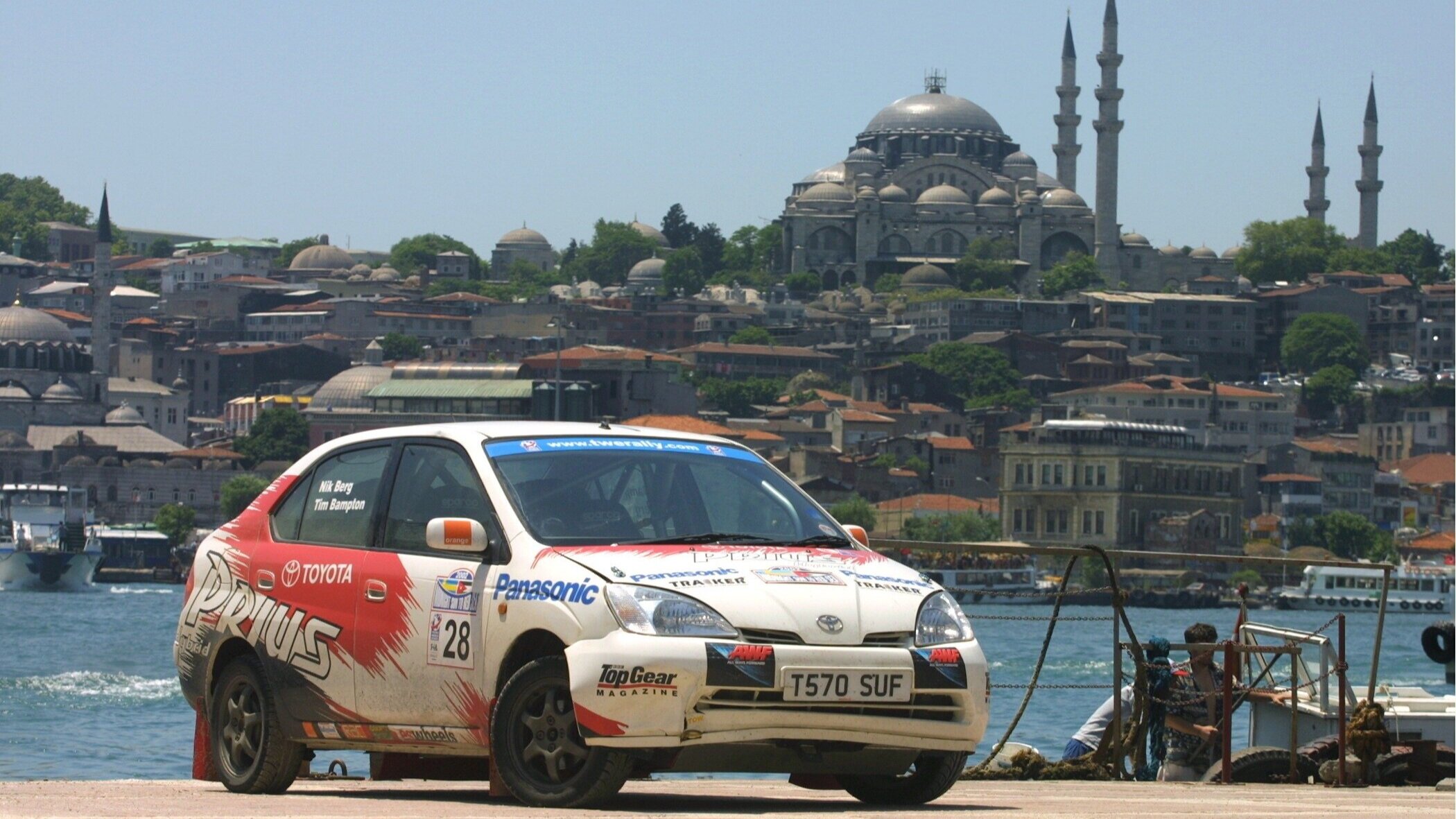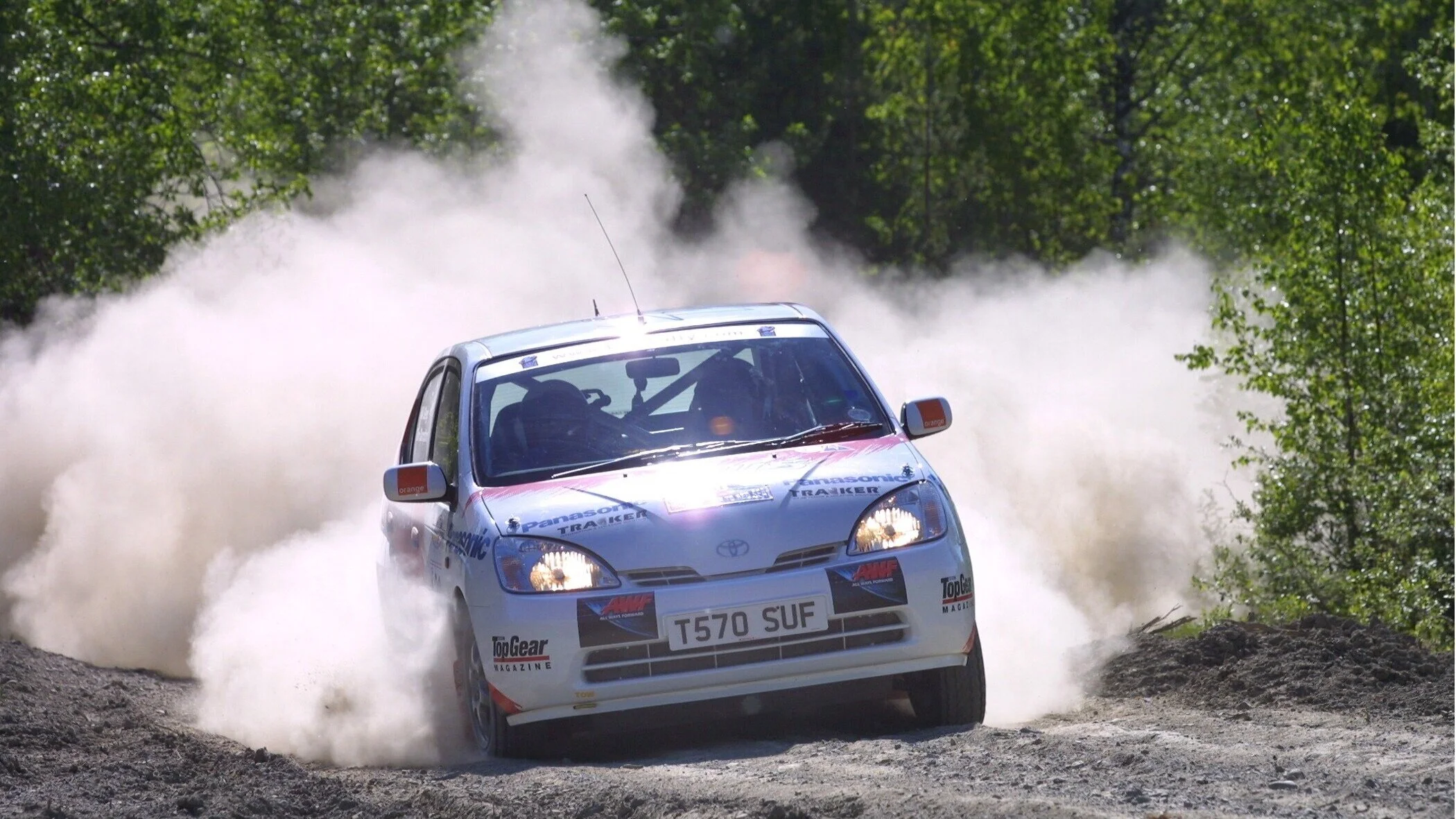Racing the first hybrid rally car in the world
Today hybrid cars are everywhere. You can’t move for Prius taxis and Lexus SUVs. Even Ferrari makes them. But back in 2002 they were a novelty. A strange new technology – would the concept even catch on? Would these electrified cars be reliable, enjoyable even?
I had an idea to find out. I would enter a first-generation Toyota Prius in the Midnight Sun to Red Sea Marathon Rally. Starting from northern Sweden, we would have 5,000 miles and ten countries to cover, arriving in Jordan in just 20 days. And 500 of those miles would be on closed road special stages. We’d be up against a mix of pre-1971 classic rally cars with anything from 1,600cc to five-litres under the bonnet and modern Group N models, restricted to under two litres and two-wheel drive.
I roped in a co-driver, Tim Bampton, and persuaded Toyota GB to donate a car and have it rally prepared. When it returned from Roger Dowson engineering at Silverstone, liveried like the Toyota Formula One cars, it certainly looked capable, but would it be up to the job?
After just a day’s competition on the forest roads of Sweden the car was fine, but I wasn’t sure we’d make it after an incident that will forever be known as Queasy Right Over Crest.
Midway through the third special stage of the second day Tim’s breakfast made a reappearance. All over the dashboard, his race suit, the road book and our rally computer. By the time we reached the finish the car was one giant pavement pizza.
After a thorough cleaning we threaded our way along appalling Polish roads and reached the Czech Republic where, as drivers of the world’s first hybrid rally car, I suppose it was to be expected that we’d also be involved in the world’s first hybrid rally car crash.
Driving the Prius was a whole new learning experience. It quickly became clear that driving foot to the floor wasn’t the way to go. The hybrid drive would give us plenty of electric boost at the start of stages, but it soon ran out. Backing off on the straights or coasting a bit on the downhill sections would bring back more charge into the batteries through the regenerative braking system – enough, hopefully for any hills. However, it would take most of the rally to really work out how to squeeze the best from it.
We were ten miles into the last special stage of the day. Starting one minute behind us, due to technical problems earlier in the rally, was a monster Holden Monaro. On the earlier stages it had passed us almost before we’d got going. But on this greasy undulating stage with its narrow road and trees in close proximity there was no sign of it. We were flying. Long straights and downhill sections kept just enough charge in the batteries to keep us going on the uphill bits. The digital speedo recorded its highest figures of the whole event as we barrelled downhill through a series of esses.
Up until this point Tim had been calling everything well. But the combination of our increased speed and his concern for the Monaro behind us meant that he lost concentration for a moment. The moment he ought to be shouting “over 90 right at junction,” to be precise.
With no warning of the corner there was little I could do but brake hard and aim for the escape road. Except that it was blocked with spectators. So I threw the car right, hoped for the best and launched into a ditch instead.
An international rescue effort saw parts flown from the UK and installed at a Czech rally team HQ where the Prius looked very tame next to their works WRC Corollas. We drove through the night and caught up with the field to race through Hungary and Romania – including the incredible Transfagarasan Highway.
The steep hills were a real struggle for us with the battery power being quickly exhausted and the Prius reverting to petrol power alone. With only 75bhp on tap our speed was often in the teens as we slogged up slope after slope.
At least when the road flattened or headed downhill, our pace was respectable, but this city car just didn’t have the grunt to make it in the mountains.
The roads in Turkey, be they gravel or tarmac, were superb rally material and we had a total of seven stages including one which involved closing a main coast road for several hours. The locals were the most enthusiastic we’d seen since Sweden and in the tiny town of Balikoy we were mobbed for autographs.
All too soon, we left for Syria. No special stages, just a wild drive into Damascus, a stay at the country’s only five star hotel and a military escort to the border.
By the time we reached Jordan were fighting hard for last place with a 30-year-old Volvo Amazon. We’d closed the deficit to just a few minutes as we entered the toughest stages of the rally. Jordan brought intense heat, desert sand, sharp rocks, steep drops, canyons and camels.
The hazards were everywhere, but the Prius brushed them all aside and I had a ball. On one particularly evil stage we were 11th fastest overall, beating a Mustang and several other muscular machines into the bargain. By the time we reached the finish ramp by the Red Sea in Aqaba we were 15th out of the 20 cars that started.
Yes, we were hours behind the winning Honda Integra Type R but we had achieved what we’d set out to do. We’d proved that the Prius could go the distance. The technology had been completely reliable and our only problems were self-inflicted. A hybrid car really can be a rally car.
Although almost 20 years later the WRC doesn’t seem to have caught up with the idea yet.
Words Nik Berg Twitter | Instagram
Photography Toyota



